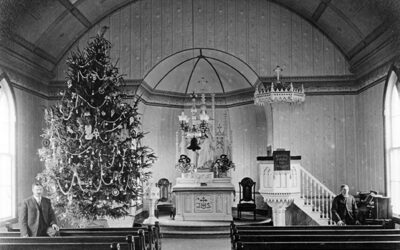The first settlers of Nebraska found a vast expanse of bluestem, which could be highly flammable. The danger was greatest during the late autumn of a dry season before the winter’s snows or after the snow melted during a dry spring. Smoke indicating a prairie fire was sometimes visible for days, and the horizon correspondingly illuminated at night. Fires sometimes originated as far away as Dakota Territory.
Bluestem in Elkhorn Valley
Several prairie fires during historic times have captured the attention of human residents of the Plains. Some news accounts have alleged the fire that recently raged through the Nebraska Sand Hills near Thedford was the largest in Nebraska history. That claim may be true for twentieth-century prairie fires, but at least one much larger fire burned off a major section of Nebraska and the Great Plains in 1865. The 1865 fire was deliberately set by the U.S. Army to drive Indians out of the Platte Valley. An account of the fire appears in Eugene F. Ware’s book, The Indian War of 1864.
The prairie fire was the brainchild of Gen. Robert E. Mitchell, commander of the military District of Nebraska. Indians had sacked Julesburg early in January of 1865, and a military expedition lasting from January 15 to January 21 had failed to bring the perpetrators to battle. Frustrated by the army’s inability to catch the elusive warriors, Mitchell requested that every ranch and military outpost along the Platte from Fort Kearny to Denver set the prairie ablaze at sundown on January 27. According to Ware, “The order was fully carried out. The country was fired for three hundred miles.”
Driven by a strong northwest wind, the scattered fires soon joined in a great conflagration. As Ware recalled, “They rolled as a vast confluent sheet of flame to the south.” From Fort Cottonwood (later Fort McPherson) Ware rode out to watch the impressive scene. Three days later the fire was still burning along the banks of the Arkansas River in Kansas and Colorado, and the flames reached the Texas Panhandle in some places. The entire section of Nebraska that lay south of the Platte River and west of Fort Kearny, along with much of the region to the south, was left blackened and desolate.
The Indians managed to survive the fire itself, but the destruction of the grasslands drove away the game and met the army’s goal of making the region temporarily untenable for the nomadic tribesmen.



